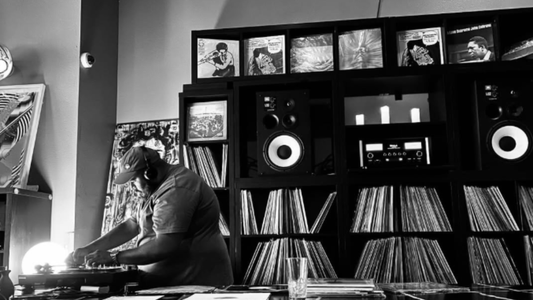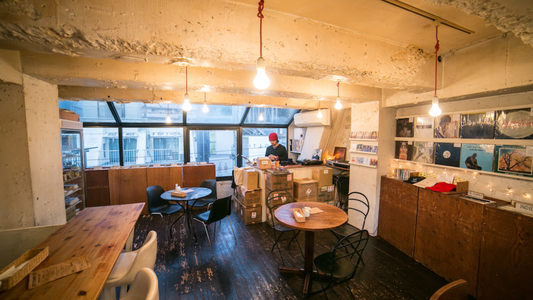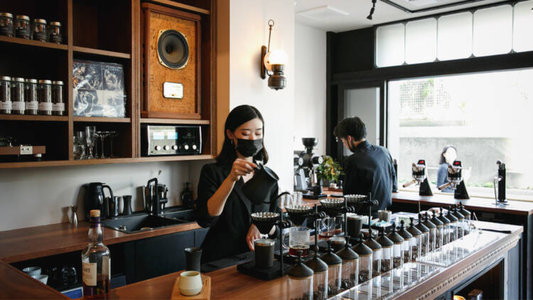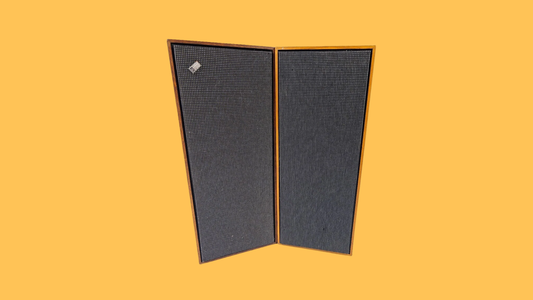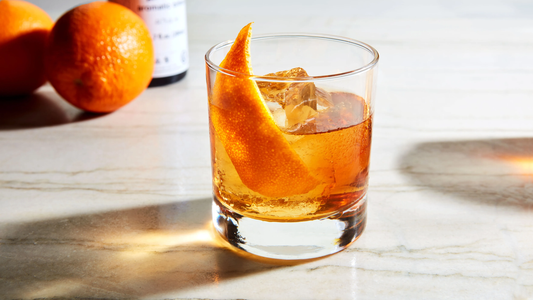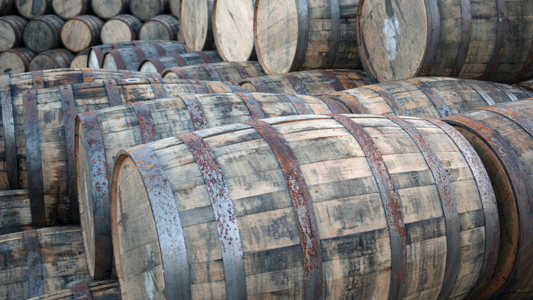
Five Drinks for the Home Listening Bar
How what’s in your glass can tune a room — five pours that shape the way you listen at home.
By Rafi Mercer
There’s a certain alchemy to the home listening bar. The lights are low, the records are near, the system hums with readiness. You’ve chosen the album, perhaps even the order of the evening — but the experience doesn’t begin with the first note. It begins with what’s in your glass.
A drink is not a distraction from listening; it’s a parallel act of design. Just as a sound system shapes how you hear, a drink shapes how you feel what you hear. Its temperature, texture, and tempo become part of the listening space. At home, where the acoustics belong to you alone, the right drink becomes a tuning fork for mood.

Here are five I return to — drinks that fit different kinds of listening. Not to chase the music, but to deepen it. Each one carrying its own geometry, its own pace, its own invitation to slow down.
1. The Old Fashioned — For the Slow Sessions
There’s a reason it always comes first. The Old Fashioned is the architecture of calm — sugar, bitters, whisky, and patience. The weight of the glass settles you before the first sip, the slow dilution mirrors the way a record unfolds. It’s the drink I pour when I want to arrive in the evening, when I want sound to become the space around me rather than a background to it.
Pair it with something classic and resolute — Miles Davis’ Kind of Blue, or Coltrane’s A Love Supreme. Music that doesn’t demand attention, but earns it. As the ice melts, as the tempo loosens, you start to realise that the Old Fashioned isn’t a drink at all. It’s a way of being.
2. The Highball — For Bright Afternoons
The highball is the listening bar’s quiet rebellion — whisky made light, airy, social. Just whisky, soda, and ice, but with the precision of a well-tuned system. In Japan, it’s treated like ceremony: perfectly clear ice, effervescent bubbles, the cold hum of refreshment.
It’s the drink for open windows, sunlight on the floor, mid-tempo records spinning — Ryuichi Sakamoto’s Async, or Hiroshi Yoshimura’s Music for Nine Postcards. The kind of listening that feels more like breathing than thinking. A highball clears the palate, sharpens the mind, and lets sound move through the air the way it’s meant to — uncluttered and alive.
3. The Whisky Sour — For Company
Some drinks make you look inward. The Whisky Sour turns you outward. It’s the social whisky — a glass that bridges sweetness and sharpness, formality and fun. It carries conversation the way a rhythm section carries melody: steady, balanced, quietly confident.
For me, the Sour belongs to gatherings — friends dropping in, a new album on the turntable, the air filled with warmth and chatter. Play something soulful but spacious — maybe Nina Simone’s Pastel Blues or Marvin Gaye’s What’s Going On. The lemon sharpens the edges, the sugar rounds them off. The egg white, if you use it, adds texture, a kind of softness that feels like trust.
A good Whisky Sour doesn’t ask for attention; it earns it, one sip and one song at a time.
4. The Negroni — For Late Nights
The Negroni has no whisky in it, and yet it feels like a cousin — complex, balanced, contemplative. Equal parts gin, vermouth, and Campari, it carries a bittersweet gravity that matches the deep end of listening. It’s what I pour when the night has settled, the room feels small and still, and the record has turned to minor keys and deeper tones.
It’s a drink that feels architectural — red as lacquer, sharp as a cymbal strike. Pair it with something textural and hypnotic: maybe Portishead’s Dummy, or Burial’s Untrue. Music that wraps around you like smoke. The Negroni slows the pulse and sharpens the mind — perfect for the hours when the rest of the world has gone quiet and it’s just you, the stylus, and the sound.
5. The Single Malt — For Reflection
Some nights you don’t want a cocktail. You just want stillness. A good single malt — perhaps Highland Park 18, GlenDronach 15, or Oban 14 — becomes the drink that listens back. Poured neat, maybe a splash of water, it’s whisky in its purest form, conversation without translation.
The single malt is the drink of endings and beginnings. It suits the last record of the night, or the first of a new day. The warmth rises, the aroma deepens, the silence between tracks stretches. You taste wood, smoke, fruit, time.
Pair it with something that carries that same sense of patience — Alice Coltrane’s Journey in Satchidananda or Pharoah Sanders’ Karma. Records that breathe, stretch, reach. The malt becomes part of the air, the air becomes sound, and everything feels exactly as it should.
At home, the listening bar is less about escape and more about arrival. It’s about building an atmosphere where the world’s edges soften. These drinks are not pairings in the traditional sense. They are instruments of tone. They tune you to listen better, to see the texture of sound, to feel time differently.
There’s a quiet optimism in the ritual of pouring. The glass, the measure, the sound of ice or cork — all small acts that tell the mind it’s time to slow down. A record can be perfect without the drink, of course. But together, they form a kind of geometry — sound and taste meeting somewhere between the ear and the soul.
That’s what I want The Pour to be: not a drinks column, but a study of the in-between. The way sound becomes taste. The way a drink becomes time. The way presence becomes luxury.
Because the truth is, you don’t need a bar to build a listening bar. You just need to listen — with both your ears and your glass.
Rafi Mercer writes about the spaces where music matters. For more stories from Tracks & Tales, subscribe, or click here to read more.





